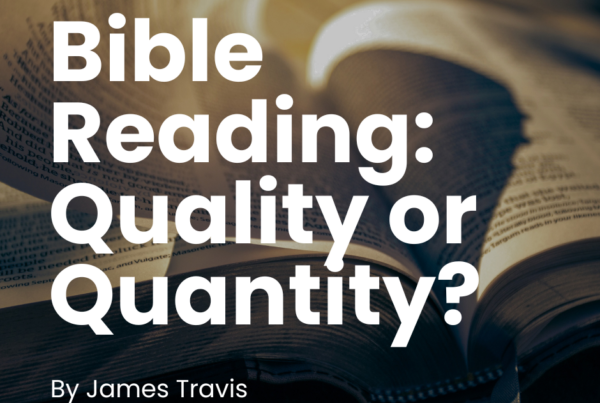
We’ve all heard that 50% of marriages fail today and that the statistics for Christians are the same as that of the rest of the population. Those statistics are wrong and they have a discouraging effect on people considering marriage.
Young people today are asking this very important question: With all of the negative statistics on divorce and marriage, why get married? In fact, many are giving up on marriage. More and more couples are choosing to live together instead of tying the knot. Wait! It’s time to revisit the statistics because they are simply wrong.
Why get married anyway?
But first let’s answer the question, “Why get married instead of living together?” The answer isn’t based on statistics. We get married because that’s what God desires and teaches in his Word. Period. We don’t use statistics to drive our decision-making. In fact, we would expect the world to have a different philosophy and find ways to justify it. As Christians, we don’t determine what’s right based on what’s working or what the latest poll reveals. We choose to obey God in spite of current trends or opinions.
Sometimes, however, we, as pastors, share statistics from the pulpit as illustrations, and it’s important to have our facts straight. The negative statistics are often used to light a fire under Christians to live according to God’s standard. Unfortunately, they often have the reverse affect causing people to feel discouraged because you would like to think that living a Christian life would produce better results. If it doesn’t, then that’s disheartening. But wait! The correct statistics do point to a greater chance of success when you live for the Lord. Hopefully this article will give you a greater understanding of how faulty statistics about the divorce rate came about and what the true numbers look like. It’s actually more encouraging than is commonly reported. Then we can use the statistics as illustrations of hope instead of despair.
A new book came out last month by Shaunti Feldhahn called The Good News About Marriage revealing that the commonly reported statistics on divorce and marriage are wrong. So where do those numbers come from and why are they inaccurate?
First, there’s no official report on divorce statistics. The numbers of marriages versus divorces are often complicated by the fact that some marriages end in the death of a spouse, and some people get divorced multiple times. But here’s a helpful statistic that you can quote: The Census Bureau’s 2009 Survey of Income and Program Participation reports that 72% of people who have ever been married are still married to their first spouse. Wow! That’s much different than the 50% divorce rate often mentioned. Again, that doesn’t take into account those who have lost their spouse by death. So the number of marriages that actually failed by divorce in the general population is much less than 28%. And that statistic has been constant over the last 30 years as reported in Census surveys.
But I thought the 50% divorce rate was common knowledge
So where does the 50% number come from? A common practice is to compare the number of marriages in town to the number of divorces in that same town. Many times that number is about two marriages for every one divorce. Some have implied from those numbers that 50% of marriages fail. But wait, that’s not even logical. If you have 100 marriages in your church and in one year you marry 20 people and 10 get divorced, does that mean that the percentage of your church’s successful marriages is 50%? No. Because you don’t take into account all of the marriage that are still continuing. That line of reasoning doesn’t take into account multiple divorces by one person, death of spouses, and the number of people who could have gotten a divorce but didn’t.
I was recently teaching a parenting seminar in Valdosta, Georgia and I met Dr. Eric Howington, who has a Ph.D in Applied Statistics and is a professor at Valdosta State University. When I heard that he had a doctorate in statistics, my eyes widened. Over dinner before the event I asked him to explain to me why one divorce for every two marriages doesn’t translate into a 50% divorce rate. His answer was this: “This is one of those math problems where you don’t have enough information to answer the question. You’re missing the number of marriages that are still ongoing. This kind of rate is determined over time and includes several factors that aren’t given in the information you’re providing me.”
It makes sense to me now, but I have to admit that over the years I’ve been duped into thinking that the divorce rate itself was higher than it actually is.
While we’re on the subject, there’s another important statistic to consider. Those who live together before marriage greatly increase their chances of divorce. Scott M Stanley reports just one of many studies that indicate that couples who live together without being officially engaged were more likely to divorce if they did get married. (“Sliding vs Deciding: Inertia and the Premarital Cohabitation Effect,” Family Relations 55 (2006): 499-509) Certainly marriage is challenging and some marriages fail, but the alternative of living together is less attractive statistically.
What about Christian marriages?
As Christians, we don’t use statistics to determine our morality, but you would expect that doing the right thing would demonstrate itself in some form of success. After all, eating right tends to make you more healthy and studying hard usually produces better grades. But many have become disheartened with marriage because the commonly reported statistics seem to indicate that those in the church suffer the same statistical demise as that of the world. Again that data is wrong. In reality, it’s not even close.
Much of the misunderstanding comes from a misrepresentation of a George Barna study conducted years ago, and, according to Feldhahn, Barna himself would like to correct the misperception. The study measured divorce rates based on beliefs, not the practices of Christians. That is, he asked people if they were Christians instead of asking if they went to church. His finding was that those who choose “Christian” as their religion have the same divorce rate as those who don’t. But when you measure religious practice instead of religious affiliation the statistics for marriage and divorce are very encouraging. Many researchers have found that when someone is active in their faith it lowers their chance of divorce, usually significantly. The Barna Group did a study on many of the data sets to ask the question about divorce rate among those who had been in church in the last seven days. The rate of divorce dropped 27% compared to those who hadn’t, even more when you isolate evangelical Christians. That means that practicing Christians have a much higher statistical success rate of marriage today.
Conclusion
So what is the current divorce rate? Or what are the statistical chances of a successful marriage? Those numbers aren’t easy to come by, but if you take the Census number of 72% of people who are married are still married to their first spouse and adjust that number to consider those marriages that ended in the death of a spouse instead of divorce, and you consider that practicing Christians do even better, then the statistics for Christian marriages are much better than is commonly reported.
It’s hard to pinpoint for sure what the exact divorce rate is for Christians but it’s far better than many realize. The work of Shaunti Feldhahn is remarkable, with all kinds of footnotes, studies, and references to support the findings that there really is some good news about marriage. I highly recommend the book.
In addition to pastoring Calvary Chapel Living Hope, Scott Turansky heads up the National Center for Biblical Parenting, teaching biblical parenting seminars around the country and helping churches develop family ministries. You can learn more about that ministry at biblicalparenting.org.









